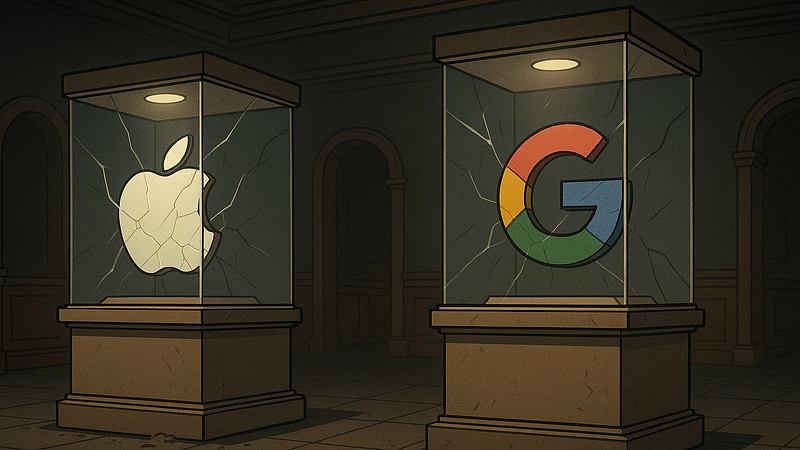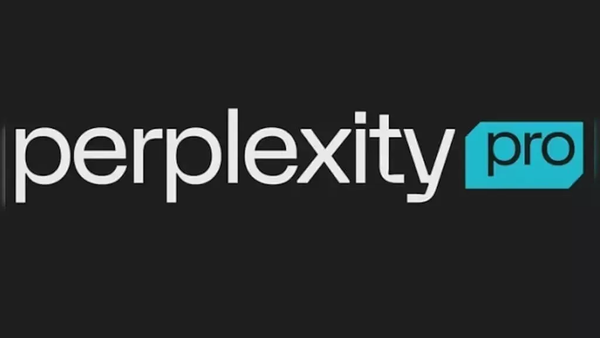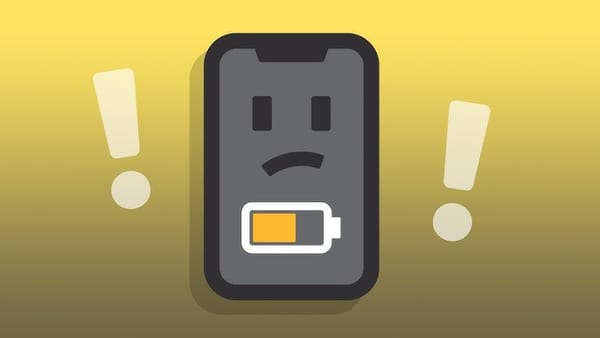From Innovation to Imitation: Apple and Google’s Desperation Is Starting to Show
The leaders of tech haven’t fallen. They’re just running out of moves.

Have you noticed how modern tech feels hollow?
We spent decades watching this industry rise, disrupting, redefining, and outpacing itself.
But now, with all that momentum behind them, the giants of tech seem to be standing still.
When’s the last time something truly new came out of Apple, Google, or any of the usual names? Not a rebrand. Not a spec bump. Something that actually changed how we live or work?
It’s starting to feel like the whole industry has stopped building and started recycling.
And the worst part? Most people barely notice. They just update, resubscribe, and move on.
Let’s talk about how we got here, starting with hardware, where the stagnation is loudest.
Hardware First: The Innovation Drought
If you want a clear view of where tech lost its drive, look at the hardware.
Apple, Samsung — pick your brand. What used to be a battleground for bold ideas has turned into a treadmill of minor tweaks and safe bets.
Every year, we get a slightly better camera, a marginally faster chip, maybe a feature users have been asking for since 2018 finally gets added, right after they remove something else that worked just fine.
That’s not progress. That’s maintenance.
And while some like to argue the hardware has simply plateaued — that there’s not much else to push forward — that doesn’t fully hold.
Because if that were true, we wouldn’t be seeing such a wide gap between what’s technically possible and what we’re actually being sold.
Some companies can match cutting-edge specs. Others choose not to. That’s not a limitation — it’s a strategy.
A strategy rooted in planned obsolescence, not innovation.
Make small changes, stretch them over the years, and sell each iteration like it’s a revolution.
Eventually, it stops being a product cycle and starts becoming a performance.
When They Ran Out of Ideas, They Tried to Switch Lanes
Once the core started drying up, Big Tech tried to pivot.
Apple, no longer leading with hardware breakthroughs, turned its attention to software — apps, music, streaming, and services.
Meanwhile, Google, the software titan, tried its hand at hardware — phones, smart speakers, Nest devices, you name it.
But neither really stuck the landing.
Sure, Apple launched Apple Music, TV+, and started snapping up apps like it wanted to reinvent itself.
But none of it really reshaped the landscape. Nothing it did could match the impact of what came before.
Google, on the other hand, rolled out its own hardware line, but even its most successful projects felt like side gigs, not a shift in dominance.
The results were scattered. A few wins here and there, but nothing that felt foundational.
These weren’t bold new bets. They were signs of giants grasping, trying to manufacture relevance in spaces they didn’t grow from.
It’s telling: when innovation stalled in their original domains, their first instinct wasn’t to rebuild or rethink — it was to branch out. Not to fix the core, but to abandon it.
Software: Stagnation in High-Resolution
If hardware is sleepwalking, software is stuck on autoplay.
Google is the clearest example. A company that once defined the modern web now feels like it’s just managing it.
Sure, it still owns the infrastructure — Search, Gmail, YouTube — but look closer. How many of their apps feel alive? How many are actually improving?
Outside of YouTube (their cash cow), most of Google’s ecosystem feels neglected or quietly abandoned.
Calendar, Keep, Docs — they work, but they’re frozen in time. Innovation has been replaced with just enough upkeep to keep users from jumping ship.
And then there’s the graveyard: Google Inbox, Google+, Allo, Stadia, Google Assistant. Projects launched, hyped, and discarded. It’s not that they were all bad — it’s that they were never really finished.
Never supported long enough to grow. The attention span of the company doesn’t seem to extend past the press release.
It’s become a pattern: launch fast, iterate once, then ghost.
This isn’t a lack of resources. It’s a lack of interest. A culture shift — from building meaningful tools to cycling through ideas fast enough to stay “innovative” in headlines.
We’re not looking at a company struggling to innovate — we’re looking at one that doesn’t seem to care if it does.
The AI Pivot: The Final Confirmation
If there’s one moment that confirms tech’s creative exhaustion, it’s how these companies handled AI.
Apple, the poster child of polished hardware, announced the iPhone 16 as built for AI — only to ship it without any real AI features. They sold the shell of potential.
No launch-ready tools, no meaningful features — just the promise that someday it might be worth it. They’re banking on hype now, not delivery.
Google took a different route: they tried to replace themselves.
By shoving Gemini into every product they own — Gmail, Docs, Search — they didn’t innovate, they overreached.
At launch, Gemini gave hilariously bad results, quoting troll articles and serving up misinformation in polished summaries. It felt like a parody of innovation, not progress.
To their credit, Gemini 2.5 is strong. Apple eventually landed a partnership with OpenAI. But that’s not the point. The real takeaway is this:
These weren’t leaps forward.
They were pivots of panic. Signs that the old engines had stalled, and the only move left was to chase the next trend with whatever resources were lying around.
What was once a race to build the future has turned into a scramble to reclaim relevance.
We’re not being shown what’s possible anymore — we’re being sold what’s marketable.
And maybe that’s the real reason tech feels so empty now.



